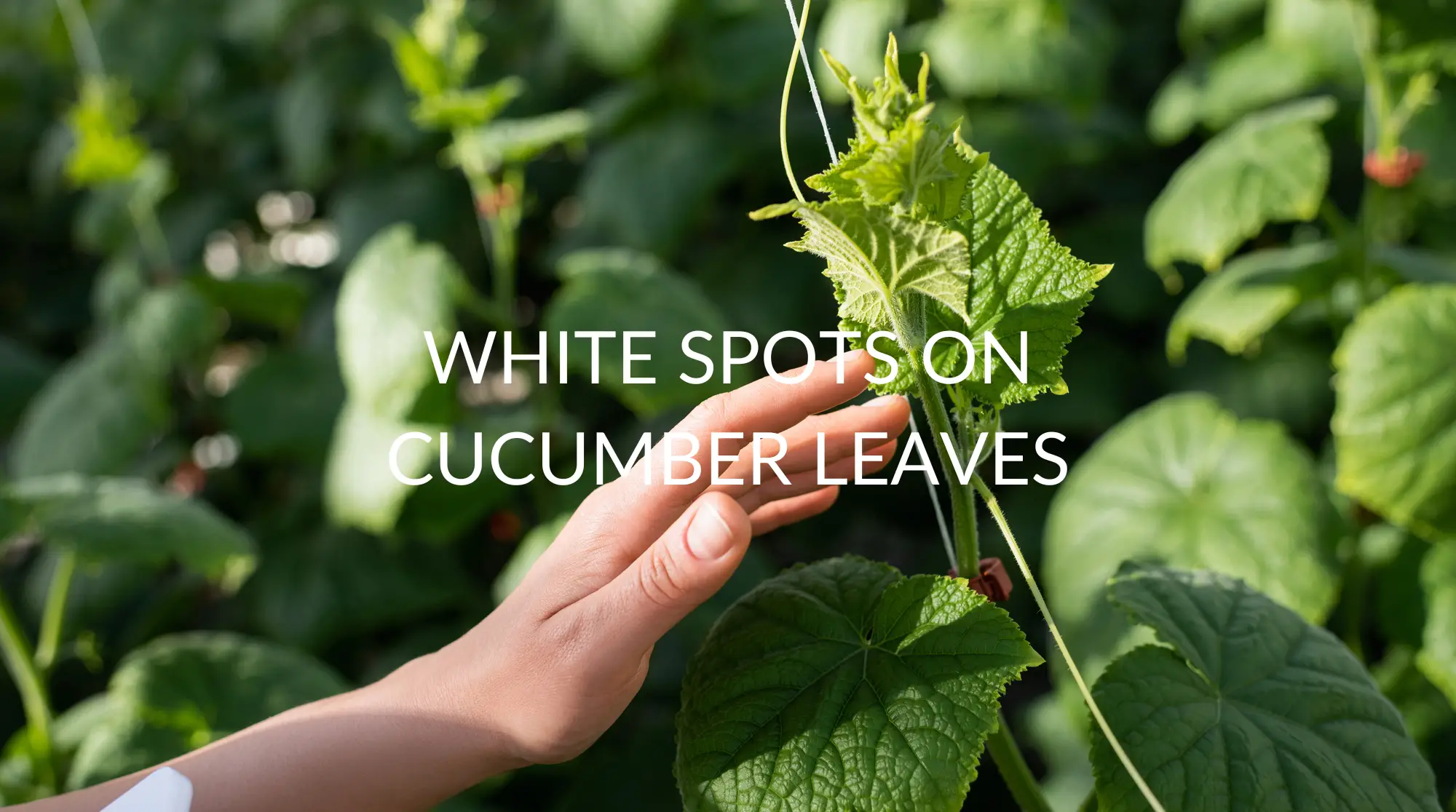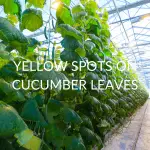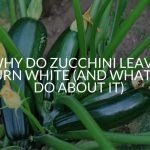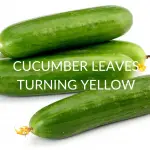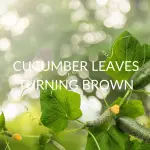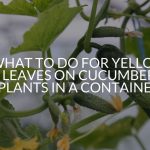Are your Cucumber plants not producing large, plentiful fruit? Have you noticed a reduction in their size and growth? Are white spots present on the leaves, stems, or flowers of your Cucumber plants? These signs suggest your plants are infected with powdery mildew.
Powdery mildew disease is a fungus that infects vegetable plants. White powdery spots on the leaves are the first signs of infection. Powdery mildew can impact the health and production of your plant. It is not fatal but requires treatment to restore their health.
In this post, we will learn what powdery mildew is, where it is visible on plants, how to treat it, and some prevention methods to keep our plants happy, healthy, and safe.
What Is The Main Reason For White Spots On Cucumber Leaves?
The main reason for white spots on the top of cucumber leaves is powdery mildew. Powdery mildew begins to grow in the lower shady areas and can cover the entire leaves of the plant. It will not kill your plants, but it requires immediate treatment as it will spread to other plants rapidly.
Cucumber plants infected by powdery mildew will be reduced in size and produce less fruit. Their leaves may fall off, leaving the cucumbers exposed to the sunlight and sunburn. Powdery mildew doesn’t affect the cucumber, leaving it still safe for human consumption.
What Is Powdery Mildew?
Podosphaera fuliginea and Erysiphe cichoracearum, known as powdery mildew, is a fungus that infects vegetable plants. It appears as white powdery spots on leaves, stems, and flowers. These spots spread across entire leaves, causing them to turn yellow and may cause them to fall off.
Powdery mildew requires a living plant tissue to grow on. It does not need moisture to initially infect a plant. Powdery mildew grows in high humidity, shady conditions, and on plants with a dense growth or excessive moisture. Prevention is key to controlling a powdery mildew infection.
How Does Powdery Mildew Spread?
Due to its small spore size, powdery mildew is spread easily from plant to plant. It can be carried on just a small breeze for long distances. It can also be spread by humans and animals between plants. It is resilient and can stay dormant for long periods.
Powdery mildew will germinate in high humidity and spread to other plants when the humidity drops. Temperatures above 90°F will slow it but not kill it. It can become dormant in the soil in the winter and return when favorable conditions allow for it to germinate and spread to other plants.
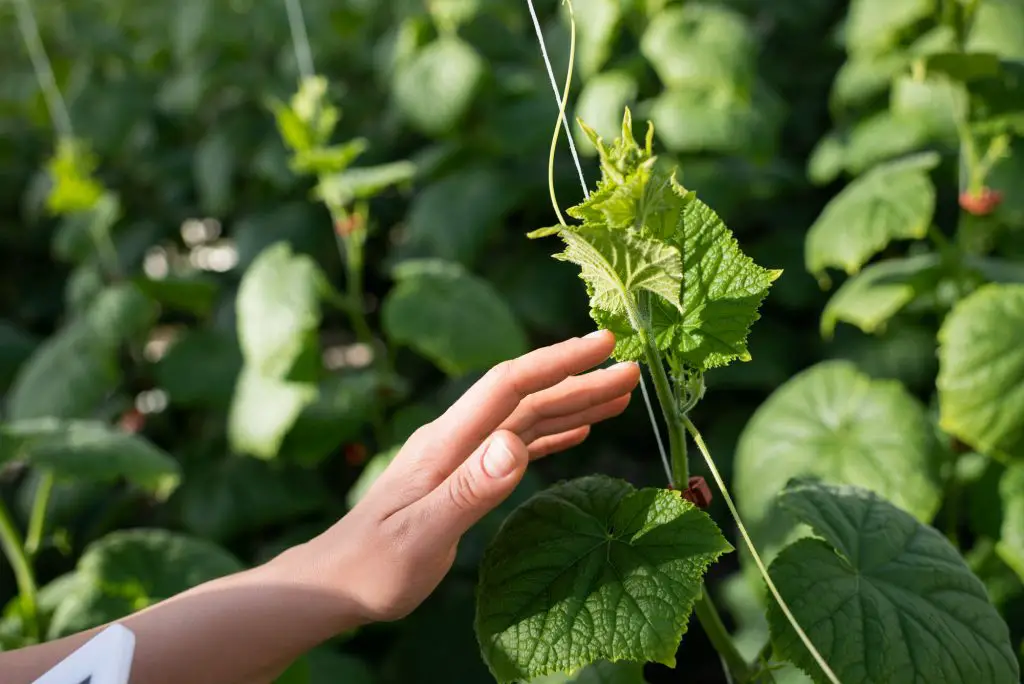
How Do You Get Rid of White Spots on Cucumber Leaves?
The two main methods to treat powdery mildew on your plants are organic and chemical treatments. Organic treatment is the preferred method. In rare or extreme cases, it may be necessary to remove the leaves of the infected plant or the plant entirely.
Organic Treatments
There are many organic treatments to control and remove powdery mildew. They are less harsh and abrasive than chemical treatments and will not harm the health of your plant or soil. Below, a few organic methods are listed with a brief description of their ingredients.
- Baking Soda
The easiest and most cost-effective way to treat powdery mildew is with a baking soda and water mixture. Combine one teaspoon of baking soda with a quart of water and spray directly on the leaves of the infected plant. Multiple applications may be necessary.
- Mouthwash
Mouthwash is designed to kill germs and can be used to kill powdery mildew. Combine one part mouthwash and three parts water for a sprayable solution. Be sure to coat the entire leaf for the best results.
- Garlic
Garlic is a popular home remedy for treating powdery mildew. Combine three bulbs of garlic, a few drops of dish soap, and water with a blender. Strain the liquid and chill. When chilled, combine one part garlic mixture with ten parts water to treat the plants.
- Apple Cider Vinegar
Apple cider vinegar may be the oldest home remedy for treating vegetable plants naturally. It is safe, easy to use, and environmentally friendly. Combine two tablespoons of ACV with a quart of water and spray the plant thoroughly to ensure it is working.
- Milk
Milk has been shown in studies as an effective treatment for powdery mildew. Combine one part milk and three parts water and spray on the plant’s leaves. It can also be used as a preventive measure to avoid a powder mildew infection.
- Compost Tea
Making compost tea can be a complex process but is effective at removing powdery mildew. There are kits available to help with the production. It is also safe for your plants and the environment. The only downside is that it may take some time to produce.
- Oil
Canola oil, mint oil, rosemary oil, and neem oil have been used to treat powdery mildew. Use a solution of three tablespoons of oil, a quarter tablespoon of soap, and a quart of water to treat powdery mildew infections.
Neem oil is also effective in disease prevention and keeping plants free of insects.
Chemical Treatments
Chemicals are effective in treating powdery mildew. They can be harsh on the plant, soil, and environment, so care must be used when treating powdery mildew with chemical treatments. Please read and follow all directions to minimize their effect on the plants and the ecosystem.
Powdery fungi can develop a resistance to chemicals. It may be necessary to treat multiple times with multiple chemicals to slow and stop the growth and spread of the fungus.
- Chemical Fungicides
During large and difficult outbreaks, chemical fungicides may be your only option. There are numerous chemicals and options available. Most general-purpose sprays to combat fungicide outbreaks are effective on powdery mildew.
- Strobilurin Fungicides
Strobilurin fungicides are systemic fungicides, part of the FRAC group 11 fungicide. They are effective against most pathogens and fungi by reducing their respiration. A wide range is available at a home and garden center.
Leaf and Plant Removal
In extreme cases, or when there is a large outbreak of powdery mildew, removal of leaves or entire plants may be required to slow and stop the outbreak. Remove any fallen leaves from the area also as they may contain powdery mildew spores, which can spread to other plants.
It may also be necessary to move or not replant the area after the removal of the infected plants. Powdery mildew spores can remain dormant in the soil and will infect future plants. Care should be taken in the future to prevent more powdery mildew infections and outbreaks.
How Do You Protect Cucumber Plants From Powdery Mildew
Prevention is the best method to stop an outbreak. Seed packages should be marked with PM to indicate the resistance to powdery mildew infections. Using one part milk to nine parts water spray may also help reduce powdery mildew outbreaks among your plants.
Keeping your plants trimmed and allowing good airflow around them are good practices in reducing powdery mildew from spreading among the plants. Direct sunlight for over 8 hours a day and early morning waterings will also help reduce infection.
If the prevention methods fail, treatment should begin as soon as a powdery mildew outbreak is observed. Treatment by natural methods or chemicals can stop it before it spreads among your plants affecting their growth and production.
FAQ
Does Powdery Mildew Grow on Vegetables?
Powdery mildew is a white fungal infection that infects vegetable plants. It is visible as white powder on the leaves, stems, and flowers of the plant. It doesn’t grow on the vegetable. The vegetables may be lower in size and production due to the infection of the plant.
Can You Eat Cucumbers From a Plant With a Powdery Mildew Infection?
Powdery mildew is a fungal infection that is present as a white powder on the leaves, stems, and flowers of the vegetable plant. It does not grow on cucumbers, making them safe for humans to consume. Their size may be limited due to the plant’s disease.
Can Leaves Infected With Powdery Mildew Be Composted?
Powdery mildew is a fungus that needs a living host to survive. When the leaves or plants infected by powdery mildew are added to a compost pile, the fungus is unable to survive. The composted material produced will be safe to use on plants without fear of a future outbreak.
What Are the Differences Between Powdery Mildew and Downy Mildew?
Powdery mildew and downy mildew may have a similar appearance and infect the same plants. There are a few main differences in identifying each of them. Powdery mildew is visible as white power on the top of the leaf. Downy mildew is more prevalent on the underside of the leaf.
The environment of both fungi is also very different. Downy mildew thrives in a cool, wet environment. Powdery mildew prefers dry, hot conditions to grow and infect plants. Downy mildew is also fatal to plant life. Powdery mildew will affect growth but is not fatal to the plant.
Will Cold or Heat Kill Powdery Mildew Spores?
Powdery mildew is resilient to temperature changes. It can be available dormant in the winter months and will resume spawning when the temperature returns to more favorable conditions. They thrive in warm, dry climates. Temperatures above 90°F will slow down its reproduction but not kill it.
What Are Some Home Remedies to Kill Powdery Mildew?
Home remedies are the preferred method for treating and removing powdery mildew. They are considered safer on the infected plant and environment than the use of harsh chemicals. Most home remedies are easily compiled, making this the quickest solution to treat an outbreak.
Powdery mildew can be controlled and stopped with home remedies. Solutions can be made with baking soda, garlic, milk, apple cider vinegar, and even mouthwash. There are also home remedies to make compost tea or using household oils to treat the powdery mildew.
Are Plants in a Greenhouse Safe From Powdery Mildew?
Plants grown in a greenhouse are not immune to powdery mildew infections. The greenhouse provides ideal conditions for it to spawn and infect other plants. Careful monitoring and treatment are imperative to identify the growth of powdery mildew to stop it from spreading.
Is Powdery Mildew Harmful to Humans?
Powdery mildew infected plants are not harmful to humans. They can be touched by humans. It does not infect the vegetables on the plant, making them safe to consume. People with sensitivity or allergies to mold may be irritated by powdery mildew.
The leaves from an infected plant can be added to compost piles. The soil can be used for future plants without any fear of reinfection in new plantings.
What Is the Difference Between Powdery Mildew and Sooty Mold?
Powdery mildew and sooty mold are two dissimilar diseases in plants. Powdery mildew is visible as a white powder on a plant’s leaf. Sooty mold is dark in color and can turn leaves entirely black. Sooty mold can be found on any plants, and powdery mildew infects vegetable plants.
Sooty mold does not infect the plant and is only found on the leaves. Powdery mildew infects the entire plant, discoloring the leaves and reducing its growth. Powdery mildew is also treated directly with home remedies or chemicals. Sooty mold is a product of an insect infestation.
Recap
Powdery mildew is a fungus visible as white powder on a vegetable plant’s leaves, stems, and flowers. It is not toxic to humans and can be handled without causing any harm. The vegetables are not infected and are safe for consumption. Powdery mildew has small spores that can remain dormant and are easily transferred from one plant to another.
It is preferred to treat powdery mildew with home remedies. They are safe for the plant and the environment. It may be necessary to treat large or difficult outbreaks with chemicals, leaf removal, or in extreme cases, removal of the entire plant. It is not fatal to plants but will cause harm to the leaves and will limit the plants’ production and growth. Happy Gardening!

